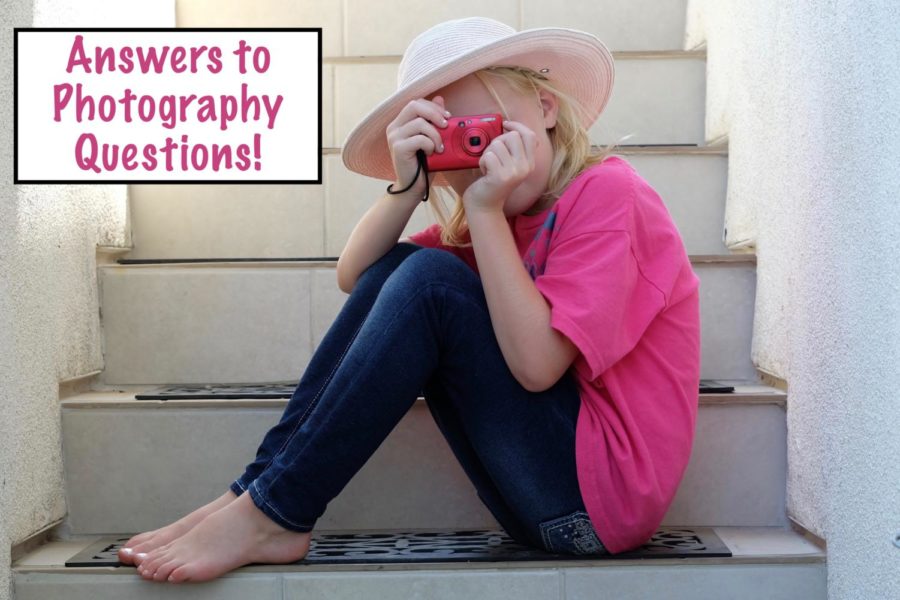Your Photography Questions, Answered!
Questions about Cameras
What kind of camera is most practical, cost efficient, and has good enough quality for a more professional camera? In other words, what camera would you suggest for a beginner?
I would recommend looking at Nikon or Canon cameras. I know many photographers who use these brands and have been very happy with the quality. Here are some guidelines for selecting a professional camera:
- The camera should have Manual, Aperture and Shutter Priority modes. These modes let you control more of the settings, which is key in a professional camera. Manual mode is typically represented by M, aperture priority is represented by A or AV, shutter priority is represented by S or TV.
- Make sure it is a mirrorless interchangeable-lens camera. This means that you will be able to use multiple different lenses on the same camera. Most cameras have this feature now but be sure to double-check! Being able to change lenses will cut down both the cost and the amount of gear you need.
- Make sure the camera is not too heavy! There is nothing worse than getting sore after taking pictures. If you purchase a camera from a store, pick it up and walk around with it for a few minutes. If you order online, check to see if the weight is listed.
Is there any noticeable difference between disposable flash cameras and those big fancy digital ones?
Yes, there is a difference in image quality between a disposable flash cameras and a digital one. With good quality digital cameras, the photographer has more control over the settings than one would with a disposable camera. However, good pictures can be made with any sort of camera, no matter the quality.
Is there a tangible difference between the pictures vintage lenses (well, 70’s & 80’s) crank out vs those from modern lenses?
Film cameras from the 70’s and 80’s have a higher dynamic range than modern digital cameras. This means that film cameras can capture more detail in the highlights and shadows. However, most film cameras don’t have as a high a resolution as digital cameras. Colored photographs from the 70’s and 80’s tend to be grainy and slightly discolored. This has become the “vintage look” that modern photographers try to imitate.
Questions about Smartphone Photography
What are some tips you would give for taking photos on a smartphone?
In my opinion, the smartphone is a great photography tool. Here are some tips to get the most out of your smartphone:
- Know your settings! Smartphones have a wealth of tools to help photographers get the best images possible. I use a grid to help compose my photographs and I enable HDR (High Dynamic Range) to capture more detail. You can find these (and other things) in the Settings app. I would also recommend looking at the Tips app on your phone. This app serves as a manual, listing the different settings you can use on your IPhone camera.
- Know basic lighting principles. Check out our video on Natural Lighting!
- Don’t forget your composition. Composition, like lighting, can really make or break your photo. Knowing some of the principles of composition will improve all of your images.
What are some of the basic rules of composition?
- The Rule of Thirds. Check out our video on the Rule of Thirds!
- Leading lines. You can use lines to lead the viewer’s eye around your photograph.
- Layers. Be sure to have an element in the foreground, midground, and background to provide depth!
Questions for the Photographer
How would you describe/explain the meaning of photography to someone who didn’t understand it?
Photography is about conveying an idea or emotion through an image. Photography makes use of light and artistic composition to present an image to the viewer. All good photographs speak to the imagination and the emotions to evoke a certain response from the viewer. This is why people often use photography to bring awareness to issues.
What’s your favorite thing to take pictures of? And why?
I enjoy nature, landscape and portrait photography. I love photographing nature and landscapes because I love capturing light in different ways and seeing how different settings play off one another to create a dynamic image. I enjoy portraiture because of its ability to capture emotion in the subject.
Why did you start doing photography?
Three years ago, I decided to take a photography class so I could learn the basics before I went on a trip to Europe. Although I had always loved taking pictures, it was after this that I decided that I wanted to pursue photography more seriously.
Do you have your own style of taking photos? If so, what?
Style is something that takes years to develop. I always strive to make my images interesting to the viewer and to capture beauty through my camera lens. If I am photographing a landscape, then my priority is to capture the majesty of the scene and convey a sense of wonder. If a portrait, then I strive to convey an emotion through the image I capture. I set goals for myself, and I am constantly working to achieve them. Often times this means I have to make multiple attempts at an image. However, taking this approach has really helped improve my photography.

